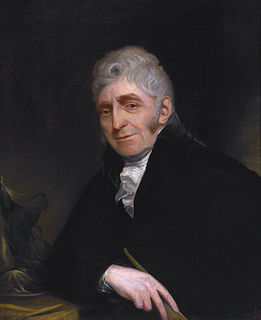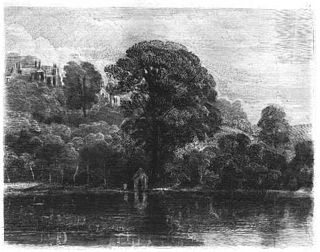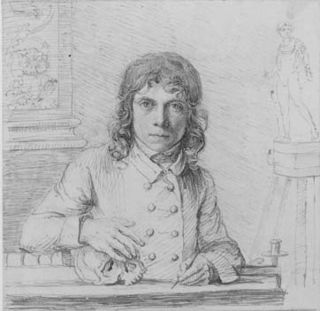
Joseph Nollekens R.A. was a sculptor from London generally considered to be the finest British sculptor of the late 18th century.

Sir William Beechey was a leading English portraitist of the golden age of British painting.
Sir William Charles Ross was an English portrait and portrait miniature painter of Scottish descent; early in his career, he was known for historical paintings. He became a member of the Royal Academy in 1842.
Events from the year 1775 in art.

Frederick Christian Lewis (1779–1856) was an English etcher, aquatint and stipple engraver, landscape and portrait painter and the brother of Charles Lewis (1786–1836).

Jeremiah Meyer was an 18th-century English miniature painter. He was Painter in Miniatures to Queen Charlotte, Painter in Enamels to King George III and was one of the founder members of the Royal Academy.

George Henry Harlow was an English painter known mostly for his portraits.
Richard Yeo RA was a British medalist and Chief Engraver at the Royal Mint, in which capacity he supplied patterns for the guinea and five guinea coins of George III. He was a founding member of the Royal Academy of Art, and appears in the group portrait by John Zoffany.
John Alefounder was a painter of portraits and miniatures, working in London and later in India.

William Artaud (1763–1823), was an English painter of portraits and biblical subjects.

George Garrard was an English animal, landscape and portrait painter, modeller, sculptor, engraver and printmaker. He played a major role in lobbying Parliament to introduce legislation to protect the copyright of works by modellers of animal and human figures.
John Cart Burgess was an English watercolour painter of flowers and landscapes, and an author of two books on art technique. He was part of the well-known Burgess dynasty of painters who flourished in the 18th and 19th centuries.
Samuel Redgrave was an English civil servant and writer on art.

Thomas Richmond (1771–1837) was an English miniature-painter.

Richard Collins (1755–1831) was a British miniature painter.
John Charles Felix Rossi, often simply known as Charles Rossi, was an English sculptor.
George Perfect Harding was an English portrait painter and copyist.

Henry Room (1802–1850) was an English portrait-painter, from an evangelical background in Birmingham.
Thomas Mogford was an English portrait painter and landscape painter.

















